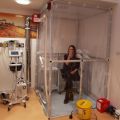
Image credit: Shutterstock/Air Images
Why so few poor, white working class boys go on to take A levels
White working class boys from poor neighbourhoods face a 'double disadvantage' of low family income and place poverty linked to their wider community. This significantly reduces their likelihood of academic study after GCSE, according to new research by Oxford University published by the Sutton Trust.
Just 29% of this group will continue to take AS, A levels or another qualification after GCSE, compared with around half (45%) of white working class boys living in more affluent areas and two-thirds (68%) of boys from more advantaged families.
The report, Background to Success, by Professor Pam Sammons, Dr Katalin Toth and Professor Kathy Sylva from the University's Department of Education looks at how gender, ethnicity and place shape academic outcomes and draws on data from more than 3,000 young people who have been tracked through school since the age of three for the Effective Pre-School, Primary and Secondary Education (EPPSE) project.
The report finds that boys are significantly less likely to carry on with academic study than girls. Two- thirds of girls take AS, A levels or another qualification compared with 55% of all boys. The attainment gap between poorer girls and their richer peers, while still significant, is also slightly less marked for girls than boys, with over half (55%) of disadvantaged girls going on to further study compared with three-quarters (77%) of the non-disadvantaged group.
The report – the second in a series by the EPPSE team for the Sutton Trust – lays bare the influence of different aspects of students' backgrounds in shaping their educational outcomes and demonstrate that a range of factors remain important. It illustrates how such factors combine to reduce a pupil's chance of entering further education. Being a boy and disadvantaged, especially being a white boy living in a poor neighbourhood, combines to create a 'double disadvantage'.
Professor Pam Sammons, lead author of the report, said: 'Our research shows how different combinations of factors affect young people's educational life chances. Disadvantaged students, especially white UK boys, have poorer outcomes and living in a poor neighbourhood compounds this.
'Unfortunately, although the pupil premium helps schools by providing extra resources for poor students, local authorities serving the poorest communities have been hardest hit by budget cuts during the last five years.
'Policy makers need to recognise what we term the "double disadvantage" to address the way family and neighbourhood disadvantage combine to reduce the chances of academic success, and to promote better opportunities and outcomes for those most at risk.'
The study draws on data from a longitudinal study of more than 3,000 young people which started when they were aged three in 1998. This is the second in a series of reports for the Sutton Trust from the EPPSE project. The first, Subject to Background, was published this March.
 Amazonia's Fire Crises: Study shows emergency fire bans are insufficient and urges strategic action ahead of the next burning season
Amazonia's Fire Crises: Study shows emergency fire bans are insufficient and urges strategic action ahead of the next burning season
 Study shows that island bats are valuable allies for farmers
Study shows that island bats are valuable allies for farmers
 Study reveals how humanity could unite to address global challenges
Study reveals how humanity could unite to address global challenges
 New Academic Champion for Policy Engagement appointed
New Academic Champion for Policy Engagement appointed
 Breakthrough aerosol human infection model gives hope for future tuberculosis vaccine development
Breakthrough aerosol human infection model gives hope for future tuberculosis vaccine development
 Helping the bright disadvantaged to achieve
Helping the bright disadvantaged to achieve